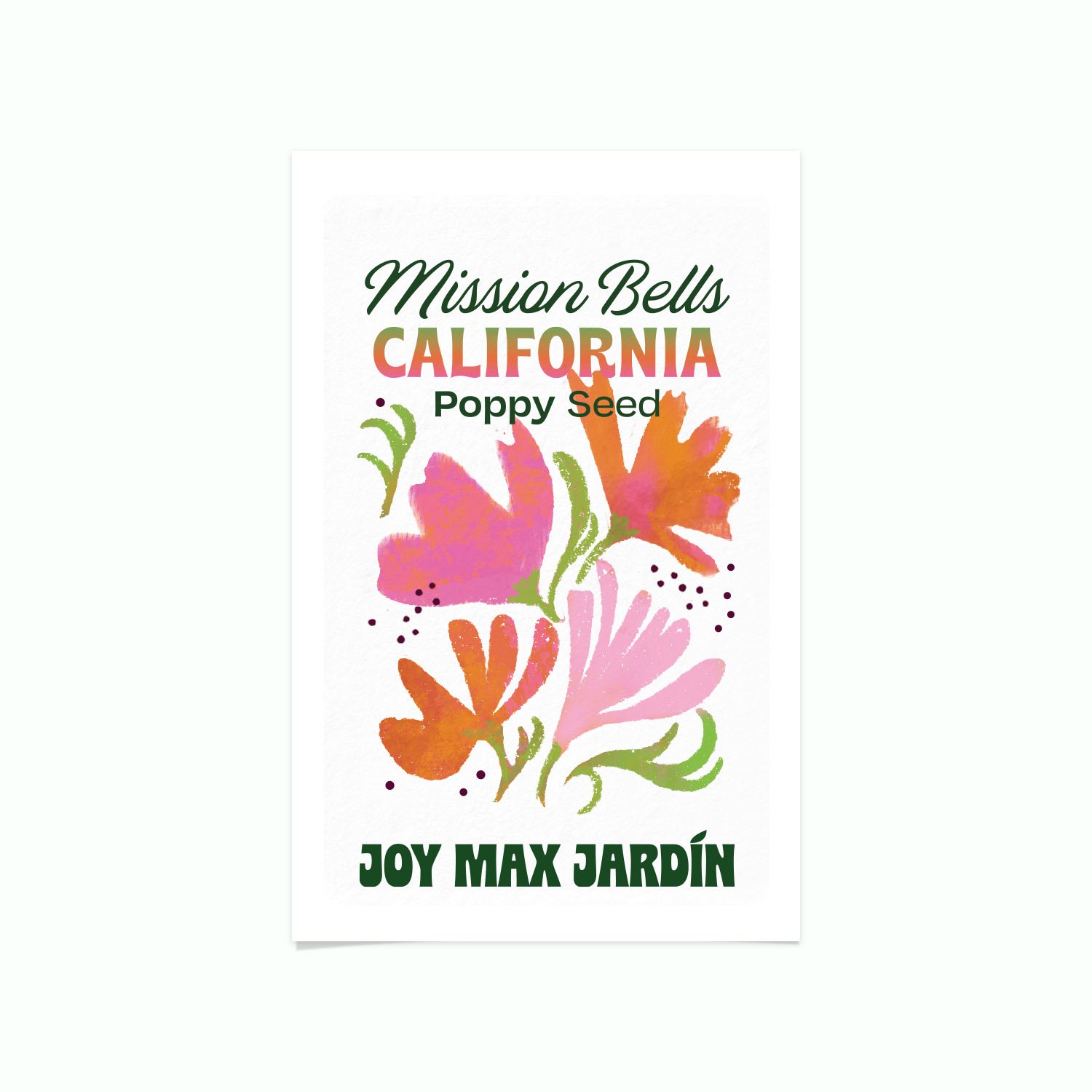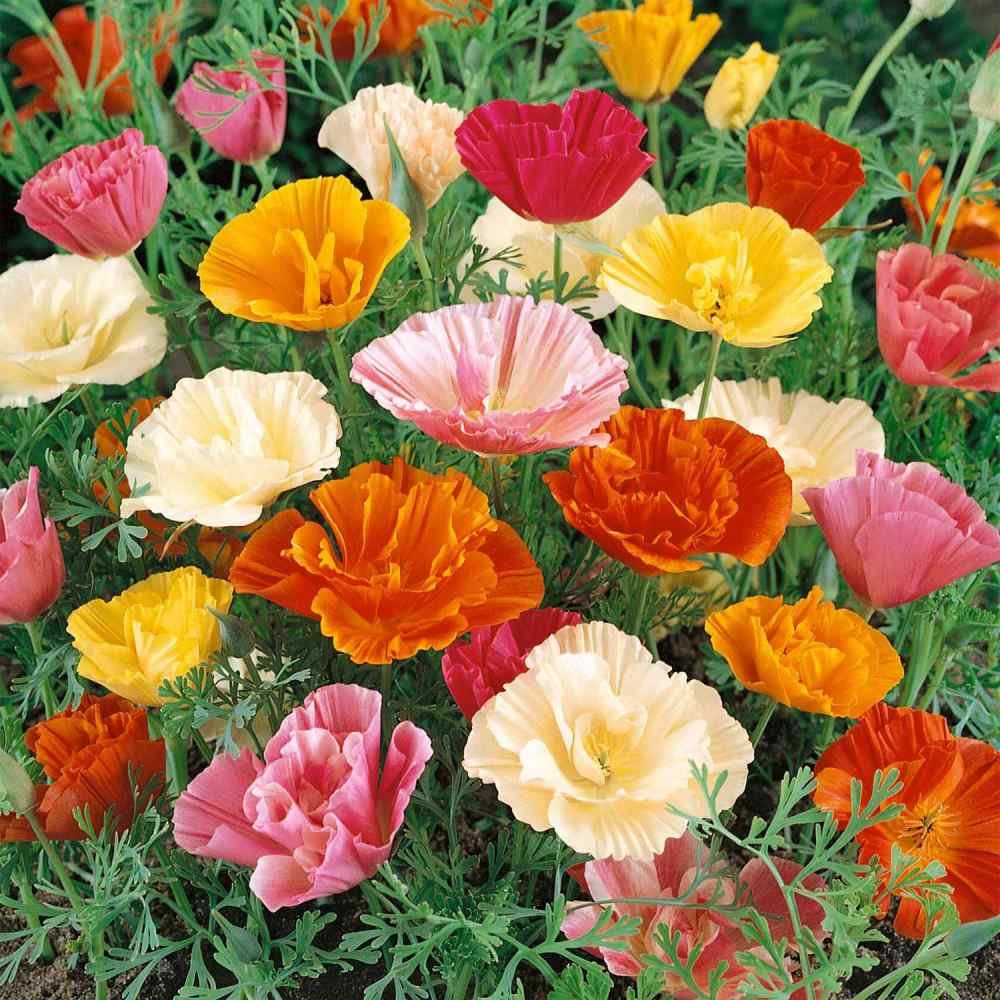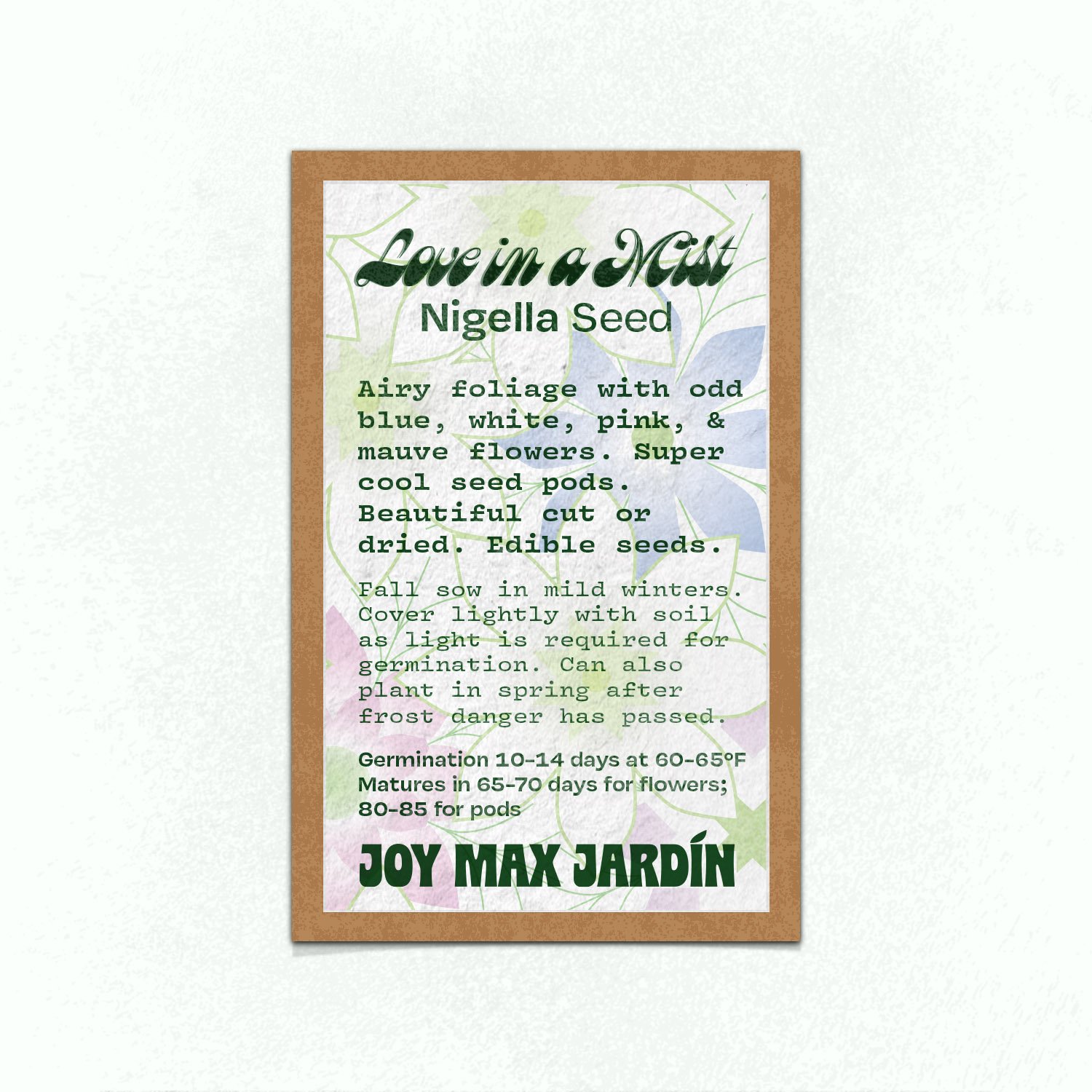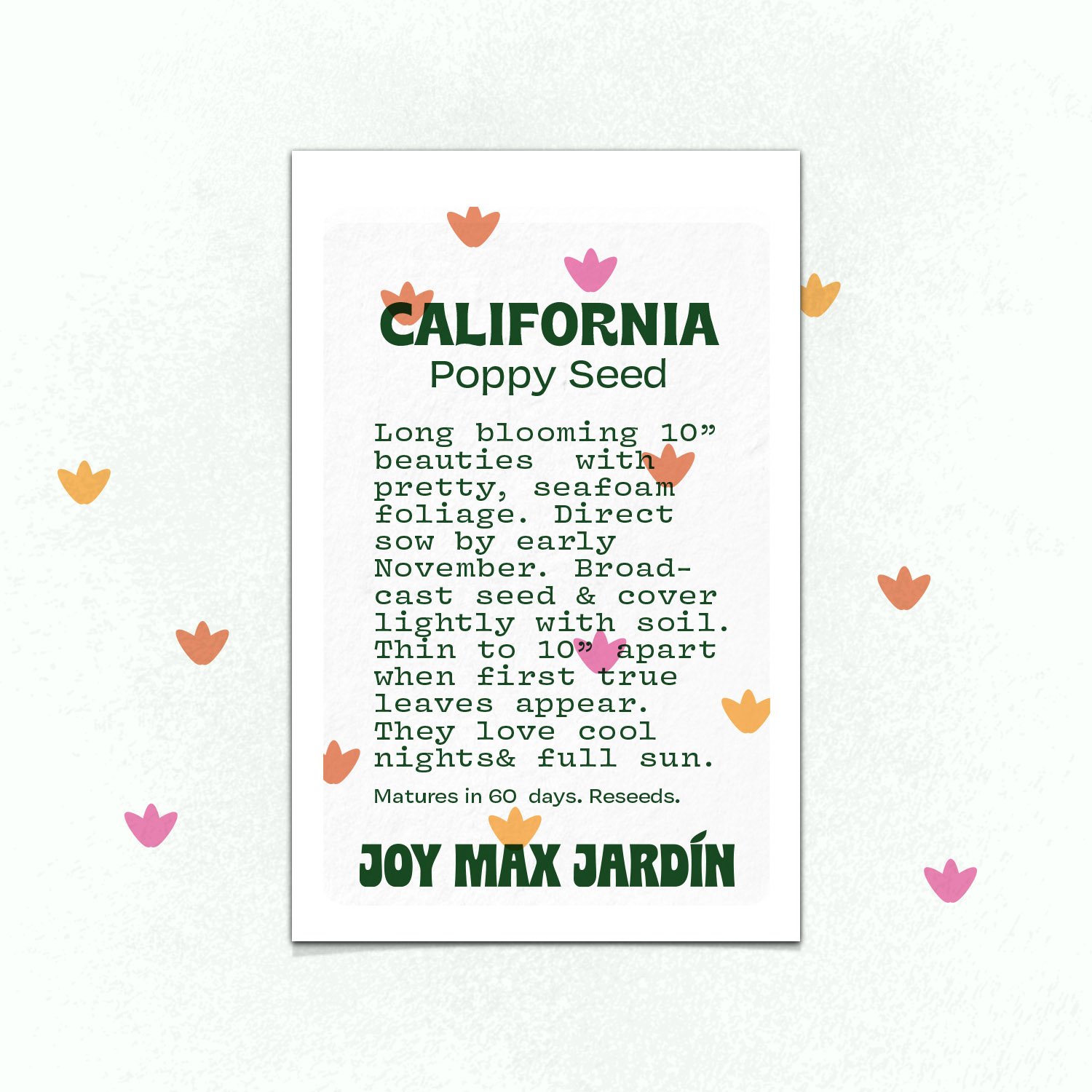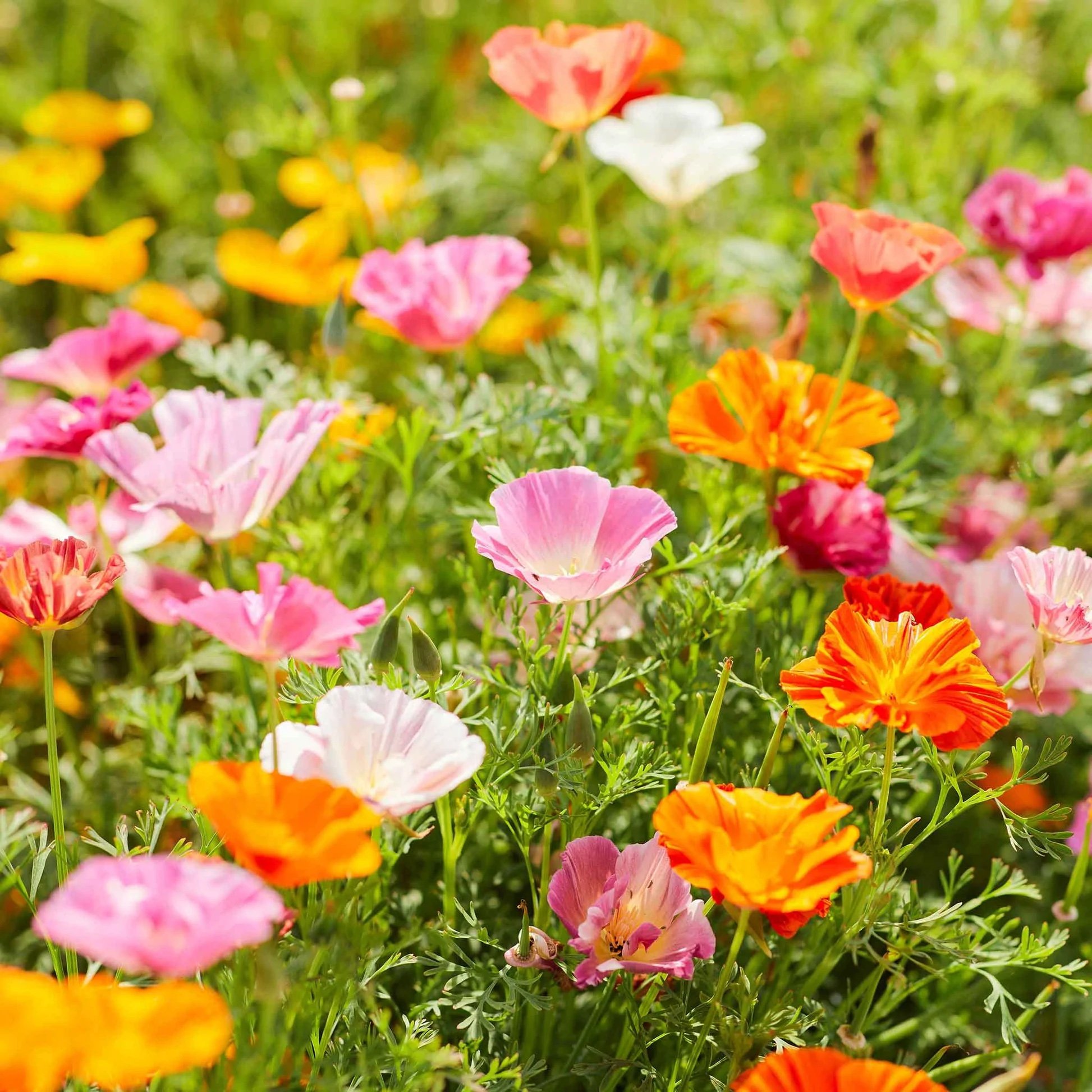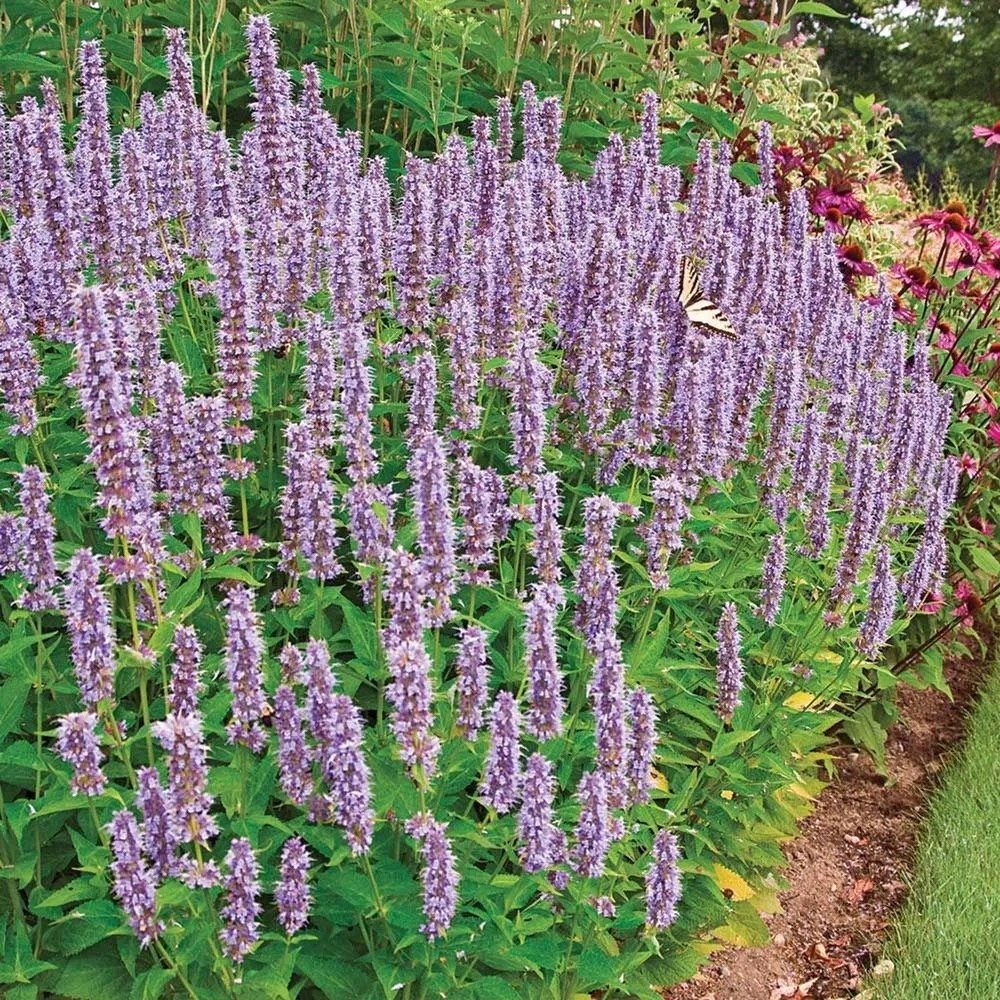What to Do in the Garden in November
Mexican Mint Marigold Tagetes lucida or “Texas Tarragon” | November 1, 2020 - a great herb for flavoring fish and potato salad.
The most glorious time to garden in Central Texas continues in November.
This is one month in Texas where only in rare exceptions, it is not a wonderful time to be outside. Raking leaves and other garden chores are a lot easier when the sun isn’t beating down on you and mosquitos aren’t swarming your limbs. All your plants perk up when the temps dip and we get some rain with the cold fronts. Even your summer veggies that you’ve kept going, your okra, tomatoes, peppers, and eggplant, get one last burst of production before the first frost comes.
Spring flowers start in fall
Wildflowers & Poppies! Last call to sow wildflowers & poppies for spring. The Texas Forever Wildflower Mix is a perfect choice, as all the flowers are native to the state and most are perennial or re-seed freely. Don’t miss your autumn window or you have to wait all year again. You want to sow them before the first frost but I’ve continued to sow into December and I still get lots of seedlings.
If you already have some established wildflowers from last year, you may want to thin out some of your massed mature plants to make room to sow more seeds and also to see if there are any seedlings searching for the sun under them.
See what was underneath the mature firewheel in my established wildflower patch? I found coneflower and primrose trying to come back and a ton of just sprouted seedlings all looking for the sun. Strategically cut back your flowers and thin the new sprouts aggressively to give all of them their space to flourish.
Pick up some more fall-sown flowers
It’s finally getting chilly…
Water crops well before a freeze. It seems counter-intuitive, but plumping up their cells with hydration gives them more insulation from freezing temps. Water when the temps are above 40º if possible, as early in the day as you can. That water will stay above freezing in our mild frosts and the plants will have more time to absorb it before the temps drop. Fun science lesson: The hydrogen bonds in water molecules that form as water freezes actually produce energy that warms the plant! This doesn’t work for long, cold winters, but for our occasional cold snaps, it makes a big difference. In the 2021 Texas Freeze, it was the unwatered shrubs and trees that I thought would be fine that didn’t make it.
Average first frost dates for Austin is November 27th-December 6th! The average first freeze in the Texas Hill Country is closer to the middle or even early November. Eastern counties in Central Texas average a first freeze closer to the end of November.
Here are the dates of the first freeze over the last seven years (source KXAN Weather):
2023/2024 - December 11 (2023)
2022/2023 — December 11 (2022)
2021/2022 — January 2 (2022)
2020/2021 — December 1
2019/2020 — November 1 (2019)
2018— November 14
2017— December 7
Use an online tool to find the first frost date for your planting zone.
Frost is what you should be wary of for some of your tender perennials and a few of your newly planted fall crops (I’m looking at you nasturtiums). Keep new seedlings well watered but not drenched. If frost is in the forecast, protect them with frost blankets tucked in at the soil level or I’ve found that an overturned bucket or felt grow bag will do the trick. I like to buy something like this long row cover and then just cut to the sizes I need for different planting areas. You can also use old bed sheets and pillowcases in a pinch. Your true fall crops, the Brassicas, and garlic especially, will taste better if exposed to a real frost or two. A hard freeze is different, when temps get into the 20s you’ll need real frost blankets, bed sheets won’t do.
If you planted saffron back in September, you should be seeing shoots pop up by the first week and flowers toward the end of the month. By November, your garden plan should be on its way to full realization. Even if your seeds are still in the ground or your carrots are the smallest seedlings, you can imagine what it will be like when the crops are larger. This is when I like to go back to garden centers and flowers and herbs to tuck into the gaps in the garden– snapdragons, pansies, marigolds, calendula, chives– these flowers are all edible and add beauty and companion planting benefits to your crops. Sweet Alyssum can be used as a cover crop or a green mulch. After it blooms and the flowers start to wither, I like to shear it off and use it as mulch in other areas. Alyssum is welcome anywhere in my garden, so if there are seeds in the mulch, I don’t worry about it. Shearing it in this way also keeps the snowy blanket of blooms coming in again and again. I also love to add ornamental kales to the garden via transplants. They really add that seasonal interest you can only get in this window of our growing season. Flowering kales and cabbages come in all kinds of colors, so mix up the varieties to get the most gorgeous outcome. I tuck these guys directly into my flowerbeds, they are so stunning.
It’s a great time to plant garlic. It likes deep, fertile soil in full sun and needs to be left undisturbed until May or June. Plant cloves 4”-6” apart and about an inch or two down, so I usually dig the hole 4” deep. Using a hori hori knife is great for this as it has the measurements right on the blade. Each clove will grow into its own bulb.
Garlic and shallots can be planted this month. If you don’t have room for a devoted space for them, grow bags are great, or tuck them into corners you can leave undisturbed even if you turn over other parts of the bed since you won’t harvest them until late Spring, in late May, or early June. It’s better to grow garlic from gardening sources, but if you try supermarket garlic, make sure it is organic.
Mulch your tender perennials. Those tropical plants that die to the ground in the winter will survive until spring as long as their roots don’t die. Make sure that plants like Pride of Barbados, banana plants, firecracker ferns, plumbago & esperanza have two inches of mulch to keep their roots warm all through the winter.
Extra Credit: You don’t need to fertilize much if you prepped your soil well before planting. Using a foliar application of seaweed will do wonders. I also like to treat all my brassicas with BT (Bacillus Thuringiensis) from the very early days. It will keep those cabbage worms from moving in. Make sure to keep it far away from any favorites of the butterflies in the garden, like dill, fennel, and parsley. If you still have Tropical Milkweed anywhere in the garden, cut it down to the root so monarchs don’t lay eggs on it.
Leaf Mulch Use fallen leaves to create paths in your garden or fill in areas you are trying to kill grass by layering cardboard & paper, watering in, and then covering with leaves. By springtime, you can just add soil directly on top of these areas and have new garden beds with no effort on your part. You can mow over leaves to shred them into your lawn. If you don’t have leaf mulch in your lawn, grab it from a neighbor’s curb when they fill up bags for collection. If you have beds you aren’t using, you can stockpile leaf mulch on top of them.
It’s a perfect time to grow lettuces and other greens.
Collect seeds & cuttings! Saving seeds from zinnias, basil, and anything else that is flowering can keep you from ever having to buy those varieties again. Take cuttings from African blue basil and sweet potato vine to start new plants you’ll put out in the spring. Sweet potato vine will die back but almost always at least some of it will return in the spring without taking cuttings. This is just a backup.
At the beginning of the month, stop cutting your zinnias so the flowers can mature enough for seed collection. You want them to dry out on the stem so the “arrowhead” seeds can easily be plucked from the flowers.
What to Plant in November:
Grow from seed: Borage, kale, Swiss Chard, spinach, mustard greens, Asian greens, beets, radishes, carrots, turnips, fava beans, cilantro, poppies, wildflowers
Transplant: By mid-month, I wouldn’t bother trying for Brussels sprouts, or cauliflower. Their growing season is so long that they probably won’t reach maturity in time for a harvest to make it worth the time and effort. Fast growing Green Magic Broccoli can still be started indoors and set out in December or planted as a transplant if you find it at a nursery. You can plant also collard greens. I love to use harvest outer leaves to use as gluten-free veggie wraps. Kale & Swiss chard you can transplant worry-free. Snapdragons, ornamental kale & cabbages can be tucked into empty areas of the garden.
Transplant or seeds: Asian greens, kale, lettuce, spinach & kohlrabi can be transplanted. I prefer to seed them every two weeks so that the baby leaves keep coming. Swiss chard, calendula, and marigolds can also be grown easily from seed or transplanted.
Ranunculus is one of the most beautiful flowers in the world (IMHO).
Spring Bulbs Iris, hyacinths, jonquils, narcissus Ziva & starflowers can all be planted this month. Most daffodils and tulips do not do well in Texas. Super bummer. I’ve heard tell of the rare variety that does though so if you have a tip, please send it my way! One of my favorite flowers that can be planted this month is ranunculus. Despite being such a luxury flower, they are very easy to grow in Central Texas. I’ve written a tutorial on how to do so here.
Strawberries A lot of you think I hate on growing strawberries. Not true! In many places, strawberries are grown as perennials. Strawberries patches get bigger and better producing with time. That doesn’t happen here. They cannot make it through the heat of our summers and the effort involved in getting them to produce even a few berries before they are snatched by birds or squirrels keeps them from being a Joy Max selection. But, to those who really want to grow them, do it! They are so pretty in the garden while they last and some people just seem to have a gift for making them thrive. Plant them bare-root this month and do your best to protect them from critters with a cold frame or chicken wire. They love to be planted near peach trees or borage.
If you have bare areas or a lot of dog traffic, consider sowing Perennial Rye to overwinter your lawn. It comes in thick and lush but will die back when the temps get hot. Water your lawn if it hasn’t rained in a while. Most grass that dies in winter in central Texas does so from dehydration rather than freezing temps.
Swiss chard and perennial Rye grass sown in November will look like this by January.
Perennials! You can still plant perennials and woody perennial herbs like thyme, lavender, and rosemary in November. Do not plant perennials that you know to be summer lovers, like plumbago or esperanza, as they likely not make it through the winter with so little time to get their roots established. Prune back your mums and astors to the ground after they finish flowering and they should bloom again in the spring. Last chance to move or divide any existing perennials in your landscape before winter.
Assess After you get a few frosts and your warm-season perennials have died down, take a look around the garden to see what areas are barren. These are great places to consider adding some evergreen interest, like a Texas Mountain Laurel or prickly pear.



